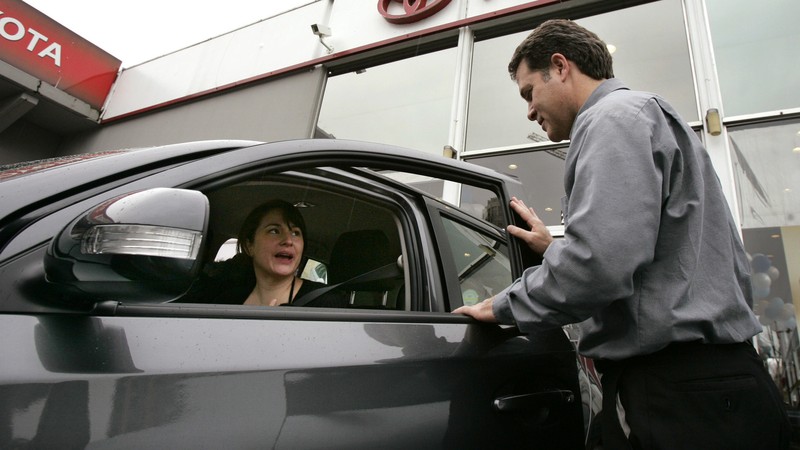Moving to a different province in Canada often comes with a host of administrative tasks and responsibilities. One important aspect of this process is transferring the ownership of your vehicle to the new province. Each province and territory in Canada has its own rules and regulations when it comes to vehicle ownership transfer, and understanding these requirements is crucial to ensure a smooth transition. In this article, we’ll explore the legal requirements and considerations for a transfer of ownership of cars between provinces in Canada.
- Check the Residency Requirements
Before you can transfer your vehicle’s ownership to a new province, you’ll need to establish residency in that province. Residency requirements can vary between provinces, so it’s essential to research and understand the specific rules of your new province. You may need to provide proof of your new address, such as a lease agreement or utility bill, to meet the residency criteria.
- Get an Out-of-Province Vehicle Inspection
In most provinces, when you bring a vehicle from another province, you’ll be required to have it inspected to ensure it meets the safety and emissions standards of your new province. This inspection is usually performed by a licensed inspection facility or mechanic. If your vehicle passes the inspection, you’ll receive a certificate or sticker indicating its compliance with local regulations. Be prepared to cover the cost of the inspection.
- Obtain a Vehicle History Report
When transferring a vehicle between provinces, it’s a good practice to obtain a vehicle history report. These reports provide valuable information about the vehicle’s past, including any accidents, title issues, or previous damage. A clean vehicle history report can boost the confidence of potential buyers if you decide to sell the vehicle in your new province.
- Clear Any Outstanding Lien
If you have a loan or lease on your vehicle, you must ensure that all outstanding debts related to the vehicle are cleared before transferring ownership to a new province. You’ll need to work with your lender to pay off any outstanding amounts and obtain a lien release or clearance certificate. Failing to do so may complicate the transfer process.
- Gather the Necessary Documentation
Transferring car ownership between provinces requires a specific set of documents, which may include:
- The vehicle’s current registration and license plates
- Proof of insurance in your new province
- Vehicle inspection certificate, if required
- Proof of your residency in the new province
- Bill of sale or a signed lease agreement if you purchased the vehicle in your previous province
- Proof of payment of any outstanding fines or fees
- Vehicle history report
- Lien release or clearance certificate, if applicable
- Photo identification
- Make sure you have all the required documentation ready before initiating the transfer process.
- Visit the Provincial Licensing Office
Once you have met the residency requirements, completed the out-of-province inspection, gathered the necessary documentation, and cleared any outstanding liens, you can visit the provincial or territorial licensing office in your new province. At the licensing office, you’ll need to fill out the required forms and pay the necessary fees for the transfer of ownership and new license plates, if applicable.
- Pay Taxes and Fees
Transferring your vehicle to a new province may come with additional taxes and fees. These can include sales taxes, registration fees, and any applicable provincial levies. The amount you’ll pay can vary based on the specific regulations of your new province. Be sure to budget for these expenses as they can be a significant part of the ownership transfer process.
- Apply for New License Plates
In some provinces, transferring your vehicle to a new province may require you to obtain new license plates that adhere to the local plate design and regulations. You may be able to retain your old plates, but it’s essential to check with the licensing office in your new province to understand the specific requirements.
- Update Your Auto Insurance
Auto insurance regulations can vary between provinces, so you’ll need to update your auto insurance policy to meet the requirements of your new province. This may include changes in coverage, policy limits, and insurance providers. It’s advisable to consult with an insurance agent in your new province to ensure that you have the appropriate coverage.
- Notify the Previous Province
Once you’ve successfully transferred your vehicle’s ownership to your new province, it’s essential to inform the licensing office in your previous province. This notification ensures that you are no longer liable for any taxes, fees, or registration related to the vehicle in your previous place of residence.
In conclusion, a transfer of ownership between provinces in Canada involves several steps and considerations. It’s essential to familiarize yourself with the specific requirements and regulations of your new province to ensure a seamless transition. Keep in mind that each province may have its own unique rules and fees, so thorough research and preparation are key to a successful ownership transfer. By following the legal requirements and considerations outlined in this article, you can navigate the process of transferring your vehicle to a new province with confidence and ease.

